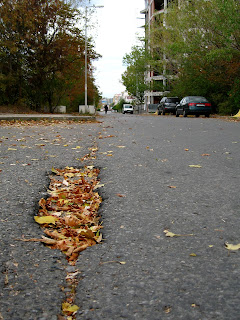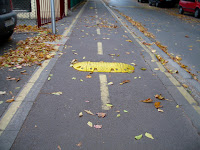I went home for Thanksgiving this year. This is not the ideal break for a trip that
takes 19 hours to complete just to say “hi” to the family, but previous plans
fell through and I had a ticket, so Wednesday after my classes were finished, I
was off to the Sofia Airport with a giant suitcase of things to leave at
home.
It was not a bad trip over.
I should buy the girl at the Lufthansa check-in desk a present for
seating me by open seats for the entire trip.
I didn’t have anyone next to me on my flight to Frankfurt or DC or St.
Louis. It was awesome and since I could
put my feet in the open seat, they didn’t swell up like an 80 year old diabetic
woman’s. On the downside, I had to go
through security at Every. Single. Airport.
By my third time around, I was just in a daze.
Highlights of my flights:
I had the happiest flight attendant ever on my Frankfurt flight who
called all females “My lady.” The flight
attendant on my flight to DC called Canada “Ca-nay-dee-a” (whoops) before
quickly pronouncing it correctly during an announcement.
I was picked up in St. Louis by my friend SQ. We tried to find non-fast food, but it was
after midnight, so McDonald’s won out. I
stayed at his apartment for the night and ran the next morning. While running I figured out that Starbucks
was the only thing open on Thanksgiving morning so we went there for breakfast
(mmmm, bagel) and got back just in time for my dad to pick me up.
My parents finally replaced Dimples, their 2003 Honda Accord
with 183,000 miles on it and severe hail damage (hence the name), with a brand
new Accord that is beautiful and has amazing super-computing skills. I still not sure I know the full capabilities
of this thing.
4 hours later, we were in Kansas City for Thanksgiving at my
aunt’s house. I snacked on good salsa
(you can buy Old El Paso salsa in the store in Bulgaria, but trust me when I
say it is not the same. Nor is it very
good) before sitting down to HONEY BAKED HAM!!
Best ham ever. I love that
store. It was delicious. Unfortunately, my sister had to work the
Plaza Lighting Ceremony all day, so she missed dinner and didn’t get to come
over until much later, however, she still got ham.
It was my birthday on Sunday, so I also got to open presents
on Thanksgiving. My parents got me 2 new
tires for my car and my cousin and aunt got me a Clarisonic because it “changed
my cousin’s life,” and she felt I needed one.
I have to say, the old face is feeling pretty good lately, so I’m
inclined to agree.
The next day, my sister and I went to Target (I could write
an ode to Target, but I’ll keep it in check) and I got some new running clothes
before heading to Von Marr to check out the shoe clearance section. All shoes in Europe are really narrow and
pinch my toes, so I got some new black shoes that are super comfy (and were 75%
off) and some rainbow shoes that are really cute.
We then met my mom, aunt, and cousin at the mall where I got
to eat Japanese Pan Noodles at Noodles and Company. (I’m holding in another ode here) I love that place.
After that, my mom and I stopped at my sister’s to get my
stuff before driving to the lake, where my parents have been storing my
car. We stayed the night there before
hopping back in the car to drive to Fort Madison.
 After getting to FM, I went to see JF and family. Her daughter is so big and so cute! We all watched ‘Brave’ together before I left
to eat at Amigo’s, my most favoritist Mexican restaurant ever. It was just as good as I remembered.
After getting to FM, I went to see JF and family. Her daughter is so big and so cute! We all watched ‘Brave’ together before I left
to eat at Amigo’s, my most favoritist Mexican restaurant ever. It was just as good as I remembered.
After dinner, I dropped in on LD, my neighbor who was home
from marine biology grad school. We have
known each other for 23 years now which exceeds everyone else who isn’t
family. I learned from LD’s dad that
some buildings near their family’s business burned down (and I do mean down) the night before. They were worried that it might spread to
their store, but luckily it didn’t.
There have been a suspicious
number of fires in Fort Madison lately, leading some to speculate that it’s
due to arson. This is probably something
that no one in the town ever thought would happen.
The next morning, my parents and I went to church, then out
for Chinese food (it seems like food was a major theme for this trip) before my
dad drove me back to St. Louis to catch my planes home. While in the airport, a guy offered my dad
and I a “free (something unintelligible) for the best looking couple at the airport.” Yeah, um, that’s my dad.
Going home, I didn’t always have an empty seat this time,
but I did when it counted: From Chicago
to Munich there was no one next to me. J
Numerical Summary:
- Total restaurants eaten at: 6
- Total hours in car: 14
- Total hours on planes: 24
- Total hours of sleep: less than required



































